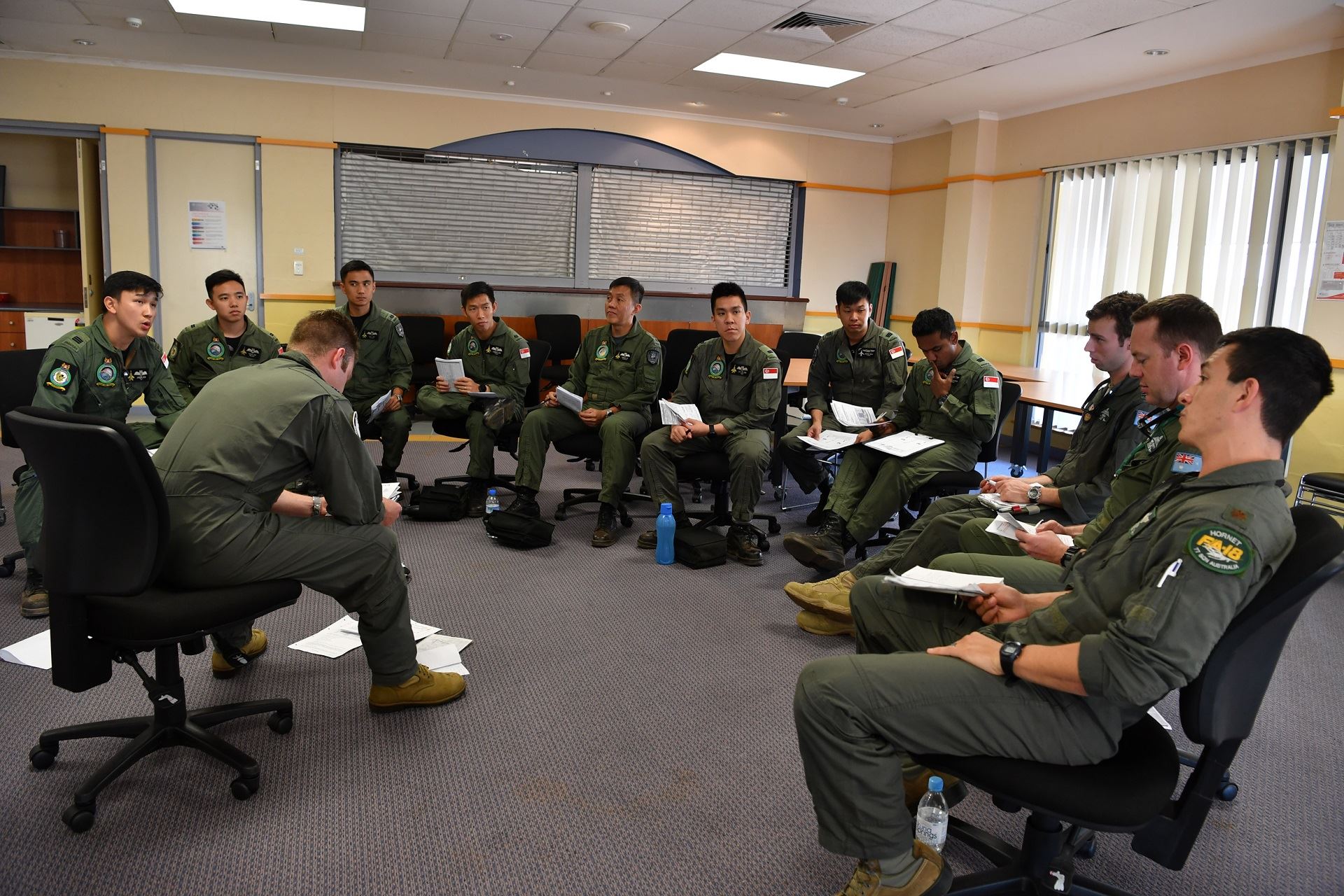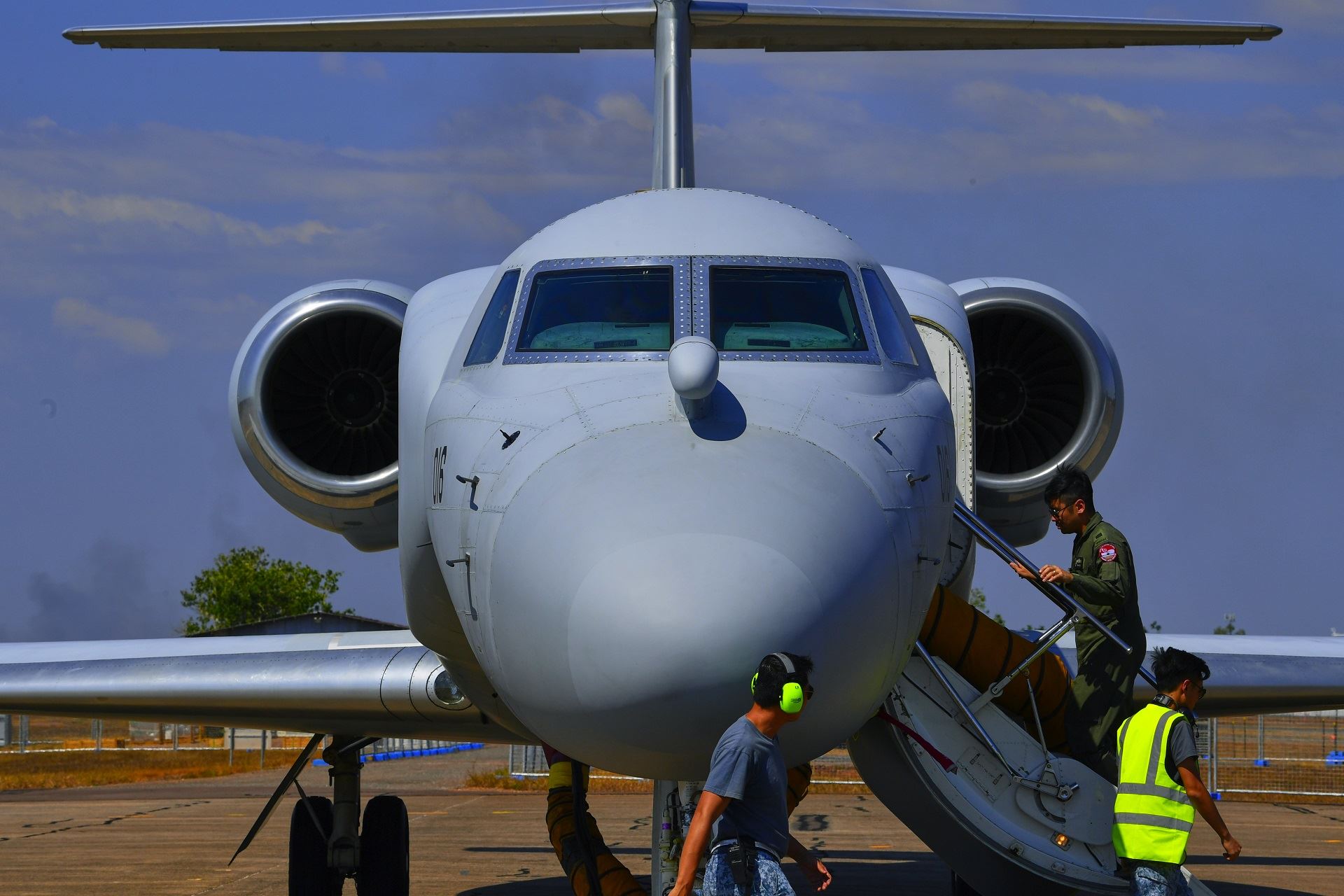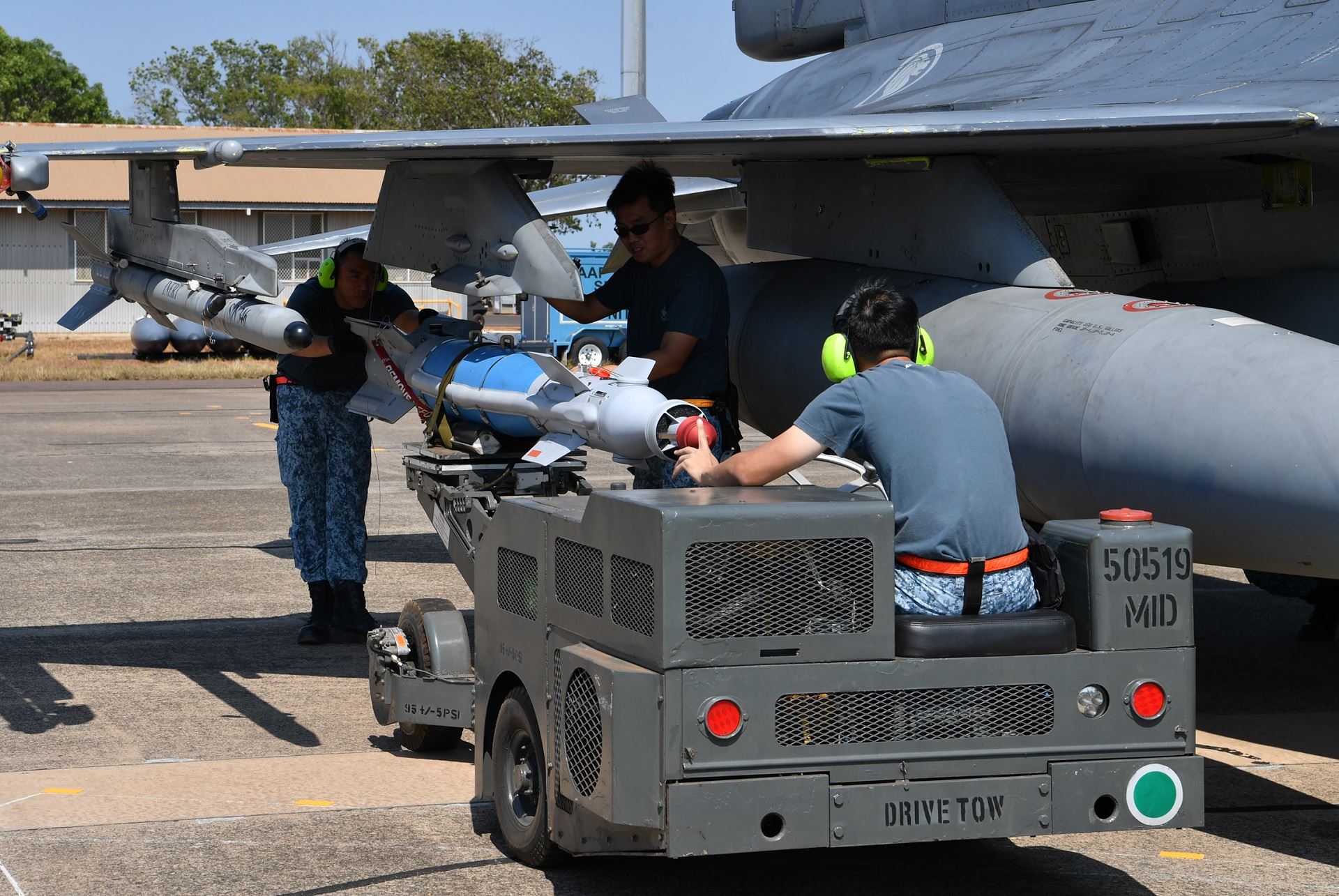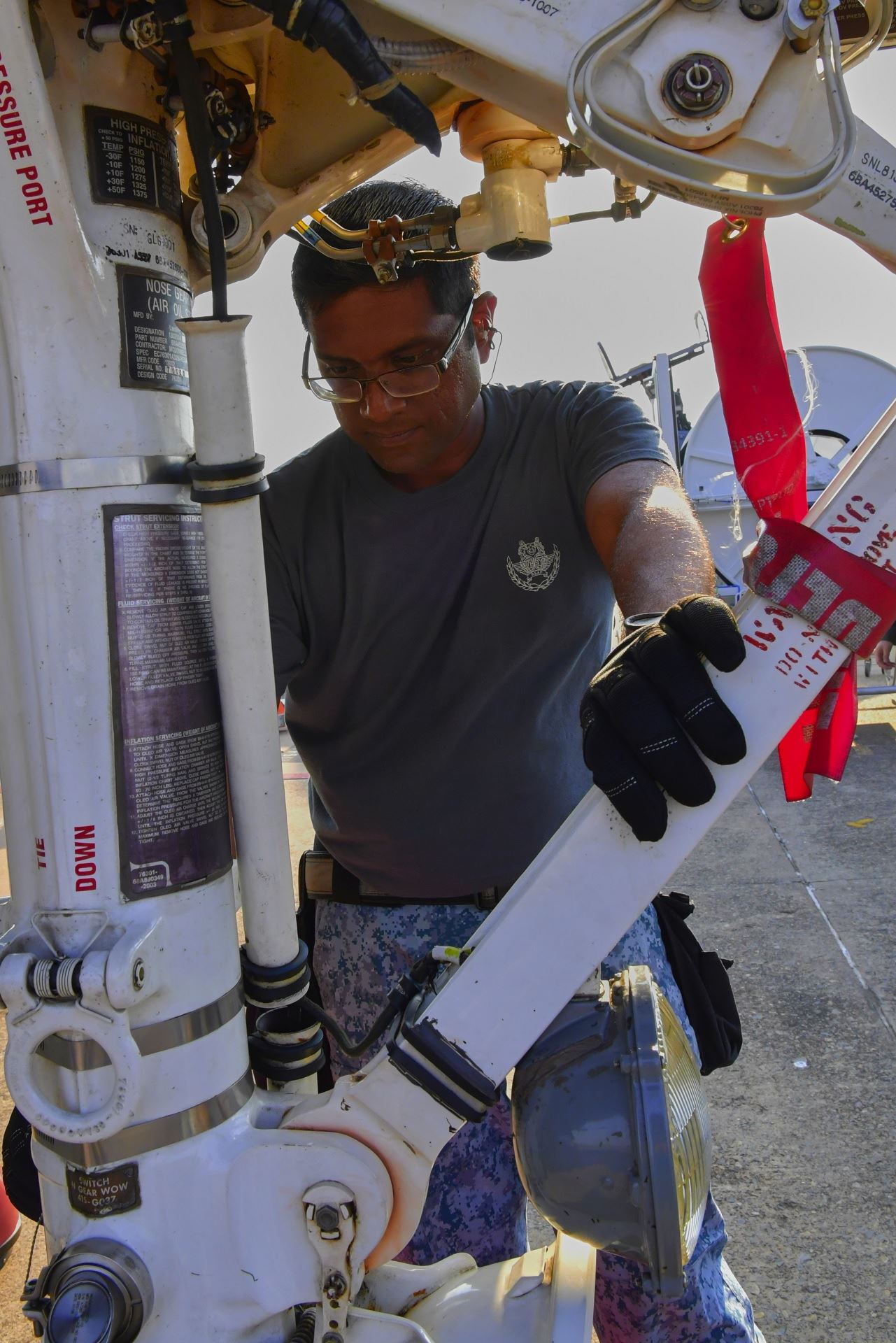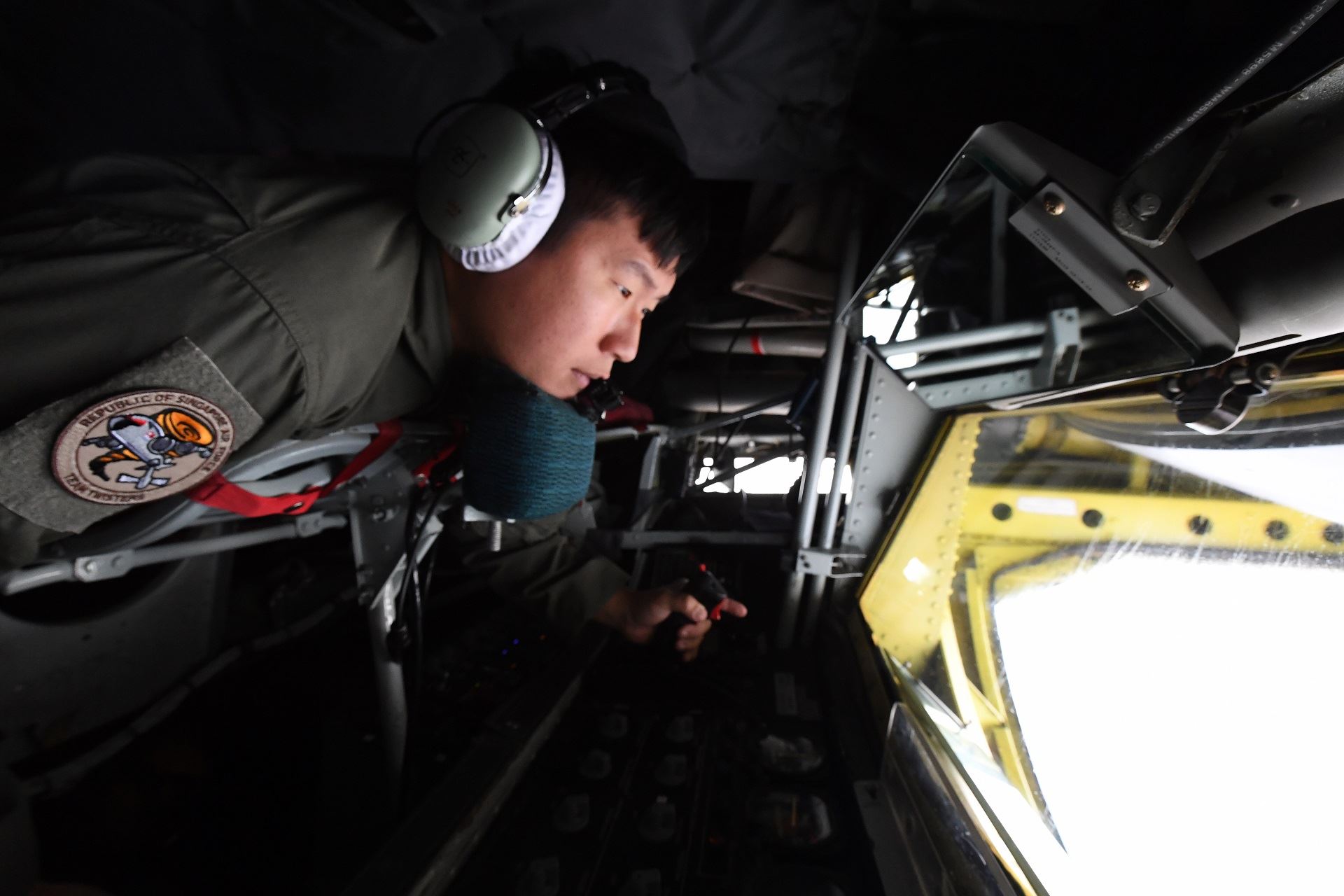OPS & TRAINING
RSAF HONES COMBAT SKILLS IN DARWIN
01 Aug 2018
It is the largest gathering of international air combat aircraft the region has ever seen.

It is the largest gathering of international air combat aircraft the region has ever seen. And though these planes come from different air forces, they are operating as one to take down any threat, day or night.
Exercise Pitch Black, one of the region's largest multinational air combat exercises, saw its biggest participation to date this year. Hosted by the Royal Australian Air Force (RAAF), the exercise is being held from 27 Jul to 17 Aug at the RAAF Base Darwin and RAAF Base Tindall, Australia.
A total of 16 countries are taking part, deploying up to 140 aircraft and up to 4,000 personnel. These countries include Australia, Canada, France, Germany, India, Indonesia, Japan, Malaysia, Netherlands, New Zealand, the Philippines, South Korea, Sweden, Singapore, Thailand and the United States (US).
The biennial exercise sees air forces from around the world pit their aerial warfighting skills against simulated threats under both day and night conditions.
This year, the Republic of Singapore Air Force (RSAF) is one of the biggest participating contingents, with 330 personnel, five F-15SGs, six F-16C/Ds, a Gulfstream 550 Airborne Early Warning (G550-AEW) aircraft and a KC-135R air-to-air refuelling tanker. The F-16 jets will also be dropping inert GBU-49 bombs during the exercise.
As part of the multilateral missions, the RSAF's KC-135R will be carrying out refuelling exercises with aircraft such as the Australian F/A-18s and the French Rafales. The KC-135R and fighter jets will be flying in formation with the RAAF and US Air Force, as part of a flypast along Mindil Beach on 2 Aug.
The RSAF has been participating in Exercise Pitch Black since 1990. The exercise continues to be an important part of the RSAF's air combat training, said Exercise Director Colonel Aldrin Tan, a fighter pilot.
"It allows our aircrew to participate in a large scale exercise (with other air forces) and operate in air space that is about 20 times that of what we have back home in Singapore.
"(And) it allows our aircrew to participate in very realistic operational scenarios, in both day and night, over both land, as well as water. This makes our training a lot more effective," said the 40-year-old.
The opportunity to exercise together with many different air forces was also invaluable. "We pit ourselves against aircrew from different nations who all operate different aircraft (and) use different tactics. Training with such a diverse set of aircraft and tactics makes us more effective as well as more adaptable," said COL Tan.
Major (MAJ) Chia Chi Yu, a Weapon Systems Officer on board the F-15SG, agreed: "When it comes to working with our friends from different countries, it gives us the chance to benchmark ourselves against their standards."
The 33-year-old added: "If we do need to go into combat operations with them in the future, it'll be a more seamless transition since we have experienced working with each other."
The different working environment was an eye-opener for many participants, including Military Expert (ME) 2 Suresh s/o Segaram, an Air Force Engineer who works on the F-15SG fighter aircraft.
Back in Singapore, he and his crew are used to preparing the F15SGs for launch from the hangars. Here, the crew have to operate from a flight line, where multiple aircraft are lined up along the runway, and take turns to taxi out for take-off.
"My job is to make sure the crew is safe when aircraft are taxiing out. When you are launching a jet from the flight line you have to be aware of the person beside you, and make sure that he is not taxiing out (at the same time), otherwise you'll be hit by the jet blast. Working here has improved my situational awareness," said the 36-year-old.
He added: "For the more junior guys, it's a good experience because they don't normally operate on a flight line unless they go for detachments overseas."
As for Staff Sergeant (SSG) Kenneth Kee, this is his most memorable exercise to date. The KC-135R Boom Operator works closely with both Singaporean and foreign fighter jets to perform air-to-air refuelling. This allows the aircraft to fly further and longer during their missions.
"This is the biggest number of foreign receivers I have ever tanked (refuelled for). I got to interact with the foreign forces and understand how they carry out their refuelling. Now I'm more familiar with their requirements and procedures," said the 28-year-old, who is participating in the exercise for the second time.
"I can see the mutual trust between the air forces - the trust they have in us by coming to us for refuelling, and the trust that we have in them (to observe our safety measures) so that we can transfer the fuel safely and efficiently."
ALSO READ IN OPS & TRAINING

Exercise Wallaby 2025: To see better, shoot faster
31 Oct 2025
The SAF focuses on complex strike missions and multi-domain integration in Exercise Wallaby 2025, the 35th edition of its largest unilateral overseas exercise.

Ex Wallaby 25 – Greater Integration and Complexity
25 Oct 2025
The 35th edition of the SAF’s largest unilateral overseas exercise is an opportunity for expanded scale and deeper integration towards an effective, networked fighting force.

Ex Forging Sabre ramps up use of unmanned assets in integrated strike operations
12 Sep 2025
In this 10th edition of Exercise Forging Sabre, the SAF sharpened its cutting edge for the dynamic modern battlefield, with expanded integration between manned and unmanned platforms.



